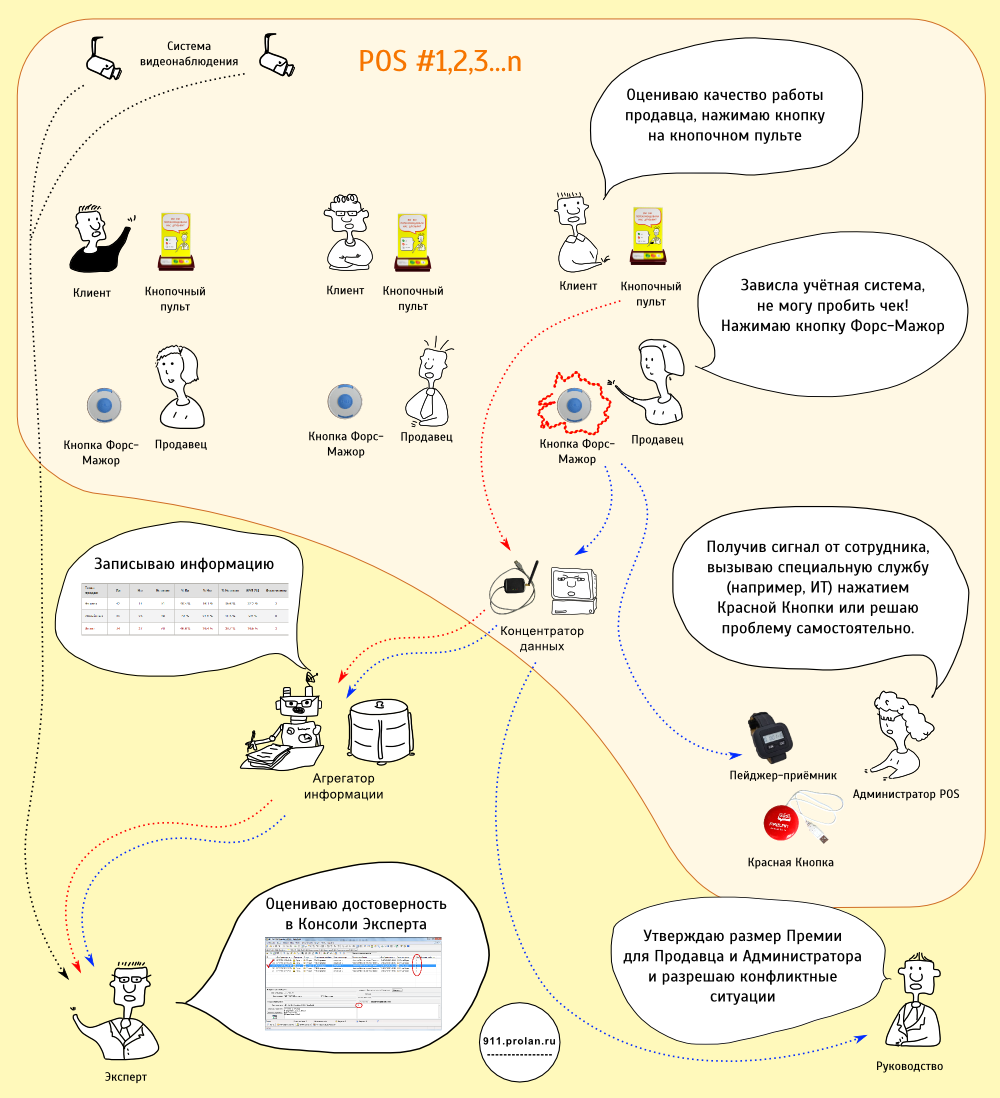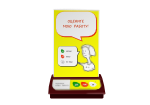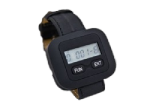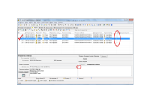Quality customer service. KPI self-regulation

We love simple solutions to complex problems. An example of such a solution is KPI management: we invent performance indicators, we link their achievement with the personnel motivation system and happiness comes. All who worked poorly, start to work well. Many, until they try to implement it in practice, sincerely believe that it will be so. Then it turns out that the idea is of course correct, only that ... That's the “only” thing.
In this article I will continue the discussion on customer service quality management. In the previous article, “Evaluate the quality of service: Motivator, management tool or demotivator?” I described how simple solutions in this area, instead of staff motivation, lead to its demotivation or simply do not work. Now I want to present a positive program and talk about technology KPI Self-Regulation , which allows you to manage the quality of customer service effectively and without the risk of demotivating personnel. This technology is based on 7 principles:
- Monitoring the quality of customer service should be continuous and total (embedded in business processes), rather than periodic and selective (as when using mystery shoppers).
- The reliability of the information received must be ensured not only by the availability of technical means of control, but also by regular random testing of the data obtained, which must also be built into the business processes.
- In addition to the long service quality management loop (employees - HR service), there must be a short circuit (front line employees - front line managers), and the short circuit must be the main one. A long loop is a classic KPI control (KPI is the share of customers dissatisfied with the quality of service). A short circuit is incident management. An incident is considered, firstly, customer dissatisfaction with the quality of service, and secondly, the occurrence of an event outside the front line personnel’s area of responsibility that could adversely affect the quality of service.
- It should be possible to quickly divide customer complaints into two categories. The first is complaints that are caused by poor front line staff. To the second, complaints are caused by events that are outside the front line personnel’s area of responsibility (too many lines, something broke).
- Personnel should be motivated to prevent customer complaints, even in cases where they are the result of events outside his area of responsibility. However, the presence of such complaints should not adversely affect staff compensation.
- Information about all the facts of customer dissatisfaction with the quality of service, as well as about all events that may adversely affect the quality of service, should be automatically sent not only to the front-line Administrator, but also to the company management. In other words, the Administrator should know that the management is informed about what is happening on the front line.
- The main way to improve the quality of customer service should not be “carrots and sticks”, but effective organization of business processes. In this case, the dependence of compensation on the results achieved, naturally, remains.
KPI self-regulation is not an alternative to KPI Management. This is a way to transform the management of KPI in retail and services from a beautiful theory into a working tool. KPI Self-Regulation is supported by the Loyalty Button solution.
')
Actors and performers

| one | Customers  | Evaluate the work of staff by pressing the appropriate button on the Button Remote |
|---|---|---|
| 2 | Seller (client manager, etc.)  | Addition to the staff motivation system. The Seller’s Premium must be inversely proportional to the number of dissatisfied customers and the number of false keystrokes of the Force Major button. The customer who is pressing the red button on the Push-Button Controller is considered unhappy when the service was received, and the Expert acknowledged that the event was reliable. From the calculation of KPI, red clicks that occur as a result of events that are not dependent on the Seller are excluded, for example, an excessive queue, equipment breakdown, etc. (this must also be confirmed by an expert). |
| 3 | Point of sale manager  | Addition to the staff motivation system. The Administrator Premium should be inversely proportional to the number of dissatisfied customers (pressing the red button), but directly proportional to the number of abnormal situations that did not lead to customer dissatisfaction due to the Administrator’s intervention and the number of conflicts resolved by the Administrator (the customer pressed the red button). did not leave dissatisfied). |
| four | Expert  | An employee of a company whose duties include verifying the accuracy of information about clicks of red and green buttons pressed by customers, as well as buttons of Force Majeure pressed by Sellers. This function can be outsourced. |
| five | Manual  | Approves the size of the Prize for the Administrator and the Seller and in the event of a conflict, is an arbitrator. |
| 6 | Push Button Console  | It is installed next to the Seller, but on the client side. The console is installed so that the Seller does not see which button the client presses. Asked question: "Evaluate my work." Inset is a picture of the Seller. Three answer options: liked, did not like, difficult to answer. |
| 7 | Force Majeure Button  | Installed on the side of the seller. The seller pushes when the occurrence of events that the seller can not affect, but which can adversely affect the quality of customer service. For example, the seller lined up too much, the cash register hung, etc. |
| eight | Administrator Pager Receiver  | When a customer presses the red button on the Push-button Controller or the Seller presses the Force Majeure button, the pager generates a vibration or sound signal. At the same time, the number of the pressed button is displayed on the pager LCD screen. Thus, the Administrator receives information - where the problem. |
| 9 | Red Admin Button   Zoom Zoom | A USB device and a special program installed on the Administrator’s computer and used to solve at least two tasks:
In both cases, the Red Button automatically generates a message that automatically sends, first, to the appropriate service to the right specialist (or to the Service Desk), and second, to the Information Aggregator. If the Administrator reports a problem that is related to the work of the IT infrastructure or business applications, the necessary checks are automatically performed on his computer, and their results (together with the screenshot at the time the red button is pressed) are included in the message being sent. For details, see Automatic Incident Registration . |
| ten | Video surveillance system  | Video cameras automatically recording to the video archive everything that happens at the point of sale. It is desirable to record not only the image, but also the sound. |
| eleven | Information aggregator  | Server and consolidated database. As a rule, are installed in the central office. The server receives information from the Pushbutton Consoles, the buttons for Force Majeure, the Red Buttons of the Administrator and writes all the received information into the consolidated database. It is important that all clicks are events tied to a common timeline and having various attributes (who clicked, where, when, etc.). |
| 12 | Data Hub  | A computer with special software to which Button Panels are connected, Force Majeure buttons, Red Administrator Button. Usually installed at the point of sale (front office). The Data Hub information received from the buttons is automatically transmitted to the Information Aggregator. |
| 13 | Expert Console  Zoom Zoom | A special program, with the help of which the Expert, being in the central office, in its time free from other cases, evaluates the accuracy of information about customer dissatisfaction (pressing the red buttons on the Push-button Remote) and the accuracy of force majeure circumstances (pressing the force majeure vendors of the buttons). After validation, this information is used to calculate the KPI of the Sellers and the Point of Sales Administrator. To be able to assess the accuracy of clicks, the Expert must have access to the video archive of the video surveillance system. Knowing exactly the time when each click occurred (displayed on the Console), the Expert Advisor compares the event with the video and qualifies it. If the press does not cause the expert doubt, then he assigns it the value 1, otherwise - 0. Qualified events are selected randomly. Then the data is statistically processed, and the Reliability value of the corresponding data is automatically generated. To determine the accuracy there is no need to qualify all clicks. It is enough to check a small part. The Reliability value obtained in this way will be transferred to the entire set of clicks over a certain period. If the Reliability is below a certain threshold, then all data for the period is discarded. For example, if the expert, checking 100 clicks made during the working day, determines that the accuracy of the information is 87% (with a threshold of 97%), then all the clicks for this working day, which was, for example, 312, will not be taken into account when calculating estimated KPI staff. |
Practical customer service quality management
Customer service quality management is a complex process that can involve a great deal. In this article I want to tell only about three important components of this process:
- Prevent customer dissatisfaction;
- Diagnosis of customer dissatisfaction;
- Strategic management of customer service quality.
Prevent customer dissatisfaction
On the platitudes that the service should be of high quality, I will not write. And so, as mentioned above, the Seller is motivated to make customers happy, because the size of his bonus depends on the lack of red clicks. Therefore, in the event of events that may cause customer dissatisfaction (pressing red buttons), the Seller presses the button Force Majeure. Thus, he, firstly, as if declines responsibility for possible consequences, and secondly, informs the Administrator about the emergency situation. At the same time, it is unprofitable for the Seller to press the Force Major button on trivial reasons, since if the press is qualified by the Expert as unreliable, the Seller will be “punished”. Therefore, the Seller will press the Force Major button only in cases that do not allow double interpretation. For example, if something broke, or a line of 10 people was lined up (at a rate of 3 people).
As a result of the Seller pressing the Force Majeure button, the Administrator receives a message to the pager. He knows that information about the abnormal situation is also recorded in the Information Aggregator (and the management knows about it). In addition, the Administrator is motivated to prevent customer dissatisfaction, so he will try to do everything in his power so that an emergency situation does not cause customer dissatisfaction. Regardless of whether the Administrator can solve the problem himself or not, he must report the problem. Sending a problem report takes a few seconds, because The Red Button is used for this. The administrator simply presses the Red Button, selects the category of the problem from the list (“What am I doing”: for example, the furnace was broken), type of action (“What I want”: for example, for the master to call), description of the problem (“What happened”: for example, does not turn on oven) and presses OK. Information is automatically sent to the Service Desk of the company servicing this furnace and simultaneously recorded in the Information Aggregator. The operator of the company's Service Desk automatically receives, firstly, all company details (the number of the service contract, the Administrator’s phone, where the stove is installed, its model, etc.), and secondly, information about the problem (the oven does not turn on). It remains to send this information to the master, who calls the Administrator and tells him which fuse needs to be replaced, where to get it, or what to do, until he arrives.
Thus, using the Red Button, the Administrator solves several tasks at once. If he solved the problem himself, he specifies information about force majeure recorded by the Seller, since management should know what the seller was pushing the button Force Majeure. If the Administrator cannot solve the problem on his own, then, firstly, he declines responsibility for possible customer dissatisfaction, and secondly, speeds up the solution of the problem.
I want to draw attention to an important feature of the technology under consideration. We are used to the fact that the Administrator always motivates Sellers to work better. In this case, there is a feedback. It is the Seller who, in the event of force majeure, motivates the Administrator to promptly solve the problem. And the Administrator can not ignore it, because Information about force majeure comes to the management regardless of the Administrator.
Diagnosis of customer dissatisfaction
This problem can be solved in different ways. The first way is just to look at the Information Aggregator. As mentioned above, as soon as an event occurs that may affect the quality of service, the Seller presses the Force Majour button, and the Administrator must investigate the incident and report on the results. Therefore, if customer dissatisfaction followed immediately after the Seller clicked the Force Majeure button, the reason for dissatisfaction with a high probability is already recorded in the consolidated database of the Information Aggregator.
The second way is to ask the client about it. If possible, the Administrator should do this by receiving a corresponding message to the pager as a result of the customer pressing the red button. After talking with the client in hot pursuit, he will not only be able to determine the cause, but will also try to extinguish the negative. If you cannot talk right away, you can call the customer, for example, the next day, when he cools a little. But for this you need to know the contacts of a disgruntled customer. This can be done if you integrate the Data Concentrator with CRM or the accounting system that supports the bonus program with bar code or magnetic cards (if this program is implemented). In this case, after the client clicks the red button, the Data Concentrator, to which the Push-Button Console is connected, automatically requests the POS terminal information about the client code (it is contained in the check) and sends it to the Information Aggregator. Contacts of a dissatisfied customer are determined on the basis of loyalty questionnaires.
The third way is to compare in time the pressing of the red button by the client, firstly, with the video recording, secondly, with the information obtained using external control systems. This method is discussed in detail in the article “Emotional loyalty in the retail and services sector. Monitoring, diagnostics, management .
Strategic Quality of Service Management
So far we have been talking about the operational management of the quality of service. This can be compared to extinguishing fires. But it is equally important to eliminate the causes that lead to their appearance. In our case, these reasons can be divided into two groups:
- Infrastructure and business processes;
- The professionalism of the staff (primarily Sellers).
The advantage of KPI Self-Regulation is that it allows you to unambiguously determine which of these causes is currently more significant. To answer this question, it is sufficient to calculate the correlation coefficient between the two metrics. The first metric is the ratio of reliable red clicks to the number of clients served. The second metric is the number of valid clicks on the Force Major button. If the correlation coefficient is 0.5 and higher, then the problem is with the infrastructure and business processes. If below 0.5, then this is a problem with the staff. Thus, KPI Self-Regulation allows you to correctly prioritize and make the right management and personnel decisions.
In addition to identifying the root causes of customer dissatisfaction, strategic management also includes trend analysis, “what if” analysis, and modeling of customer behavioral activity. Since the technical means of the proposed solution makes it possible to assess the accuracy of the information, based on historical data, it is possible to construct a model of dependence of the number of complaints on key factors, in the simplest case, the number of force majeure events of various types. Having such a model, one can model the behavioral activity of clients and, thus, develop an adequate business development strategy.
Criterion of truth - practice
Key advantages of the proposed solution:
- Efficiency. In the beginning of the 90s, when “secret buyers” appeared, electronics and video surveillance systems were expensive, and labor was cheap. Now the opposite is true: the labor is expensive, and the technical means are drastically cheaper.
- Efficiency. It is known that saving an old customer is about 5 times cheaper than finding a new one. Therefore, proactive management focused on preventing customer dissatisfaction is more effective than reactive management. The proposed solution is an example of a classic proactive customer service quality management system.
- Time to value. In the classical management of KPI, incidents and problems are diagnosed (if this can be done) for at least one month (a long control loop). The proposed solution allows you to do this in a few hours. A dissatisfied customer talks about his negative experience to an average of 6 to his acquaintances. The faster the bottlenecks are eliminated, the lower the losses and risks.
- Introduction without a “headache” and negative. It is known that the introduction of any control systems personnel takes a negative. The proposed solution is a friendly system for bona fide personnel, since it allows you to separate customer dissatisfaction, caused by the work of the staff, from the discontent associated with force majeure events. This, firstly, reduces the likelihood of sabotage during the implementation of the system, secondly, it excludes the possibility of demotivating personnel during its operation.
To test the effectiveness of the system in practice, you can take part in the research project “Clients: Measure their loyalty” (the software and hardware within the project are provided for temporary use free of charge).
Source: https://habr.com/ru/post/197504/
All Articles